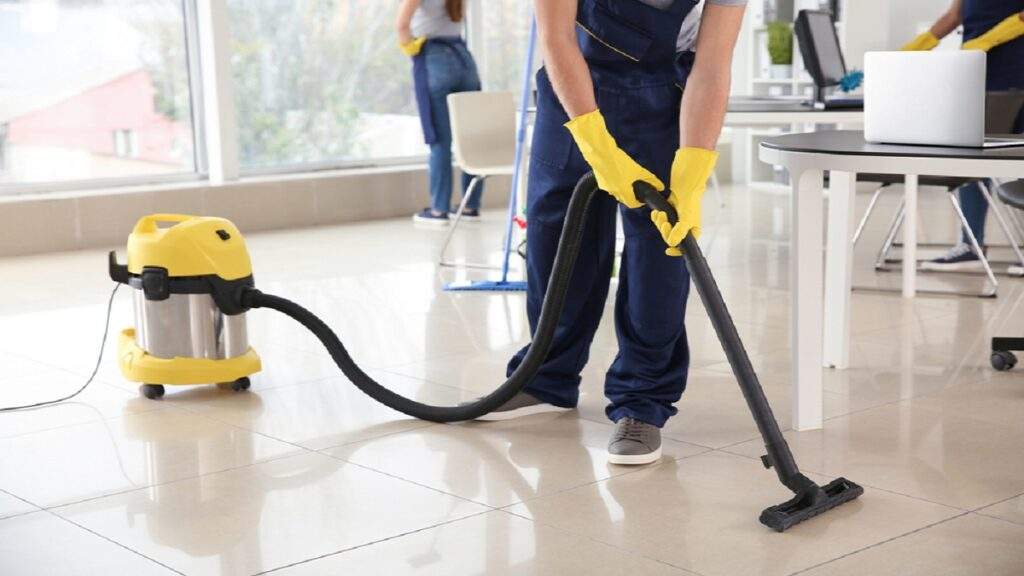
The Impact of Commercial Cleaning on the Environment

Introduction
In today’s rapidly evolving world, environmental concerns have taken center stage. As individuals and businesses strive to adopt sustainable practices, the impact of various activities on the environment is being scrutinized more closely than ever. One such aspect that often goes unnoticed is the impact of commercial cleaning practices on the environment. This article delves into the complex relationship between commercial cleaning and the environment, highlighting the potential consequences and discussing ways to mitigate them.
The Need for Commercial Cleaning
Commercial cleaning services play a vital role in maintaining healthy and productive environments for businesses, institutions, and public spaces. A clean and hygienic workplace not only promotes employee well-being but also creates a positive impression on clients and visitors. However, the methods and products used for cleaning can have significant implications for the environment.
Chemical Usage and Air Quality
One of the most immediate impacts of commercial cleaning New Jersey on the environment is the use of chemicals. Traditional cleaning products often contain harsh chemicals that can contribute to air pollution both indoors and outdoors. Volatile organic compounds (VOCs) found in many cleaning agents can lead to indoor air pollution, resulting in respiratory problems and other health issues for occupants.
Furthermore, when these chemicals are disposed of or washed down drains, they can enter the water supply and harm aquatic ecosystems. To address these concerns, businesses are encouraged to opt for eco-friendly cleaning solutions that minimize chemical exposure and promote better indoor air quality.
Waste Generation and Management
The amount of waste generated by commercial cleaning practices can also have a substantial environmental impact. Single-use cleaning materials, such as paper towels and disposable wipes, contribute to landfill overflow. Additionally, improper disposal of cleaning-related waste can further exacerbate pollution and harm local wildlife.
Businesses can adopt sustainable waste management practices by using reusable or biodegradable cleaning materials, encouraging recycling, and implementing proper waste separation techniques. By minimizing waste production, the carbon footprint associated with commercial cleaning can be significantly reduced.
Energy Consumption
The energy consumed during commercial cleaning activities is another aspect that should not be overlooked. Vacuum cleaners, industrial washers, and other cleaning equipment can contribute to increased energy consumption. In regions where electricity is primarily generated from non-renewable sources, this energy usage can indirectly lead to higher greenhouse gas emissions.
To mitigate this impact, businesses can opt for energy-efficient cleaning equipment and adjust cleaning schedules to optimize energy usage. Using natural light and ventilation can also reduce the need for artificial lighting and HVAC systems during cleaning operations.
Water Usage and Conservation
Water scarcity is a pressing global concern, and commercial cleaning practices that involve excessive water usage can exacerbate the problem. Pressure washing, for instance, can lead to substantial water wastage. Moreover, the release of contaminated water from cleaning activities can negatively affect local water bodies and soil quality.
Implementing water-saving measures, such as using low-flow cleaning equipment and capturing and treating wastewater, can significantly reduce the environmental impact of commercial cleaning. These steps not only conserve a precious resource but also align with sustainable business practices.
Green Certifications and Eco-Friendly Practices
In recent years, the commercial cleaning industry has witnessed a positive shift towards adopting eco-friendly practices. Many businesses are seeking green certifications that validate their commitment to environmentally responsible cleaning. Certifications like LEED (Leadership in Energy and Environmental Design) encourage businesses to implement sustainable cleaning practices that prioritize both human health and the environment.
Green cleaning practices involve using non-toxic, biodegradable cleaning agents, reducing waste, conserving water and energy, and promoting responsible disposal of cleaning-related materials. By adhering to these practices, businesses can significantly reduce their environmental impact while contributing to a healthier workplace and community.
Education and Awareness
Raising awareness among employees, clients, and the general public about the environmental implications of commercial cleaning is crucial. Educating stakeholders about the benefits of eco-friendly cleaning practices and the potential harm caused by conventional methods can drive demand for more sustainable solutions.
Businesses can organize workshops, seminars, and informational campaigns to promote understanding and engagement with green cleaning practices. In doing so, they not only improve their environmental footprint but also position themselves as socially responsible entities.
Conclusion
The impact of commercial cleaning on the environment is a multifaceted issue that demands attention from businesses, consumers, and policymakers alike. As the world becomes more environmentally conscious, adopting sustainable cleaning practices is not just a choice but a necessity. By reducing chemical usage, managing waste responsibly, conserving resources, and promoting green certifications, businesses can play a pivotal role in safeguarding the environment for current and future generations. Through collective efforts, we can ensure that cleanliness and environmental responsibility go hand in hand.